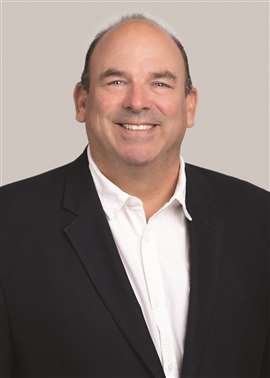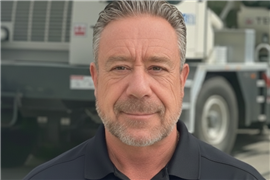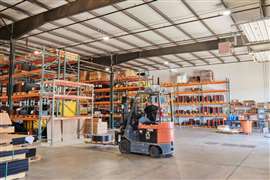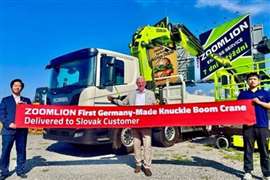Navigating the heavy equipment financing market
28 November 2023
ACT’s annual Finance Forum participants discuss the economy, interest rates, supply chain issues, geopolitical conflict and a possible recession.
There is a sense of ambiguity across several business sectors, but the finance market for heavy equipment remains resilient, but also hard to predict. ACT spoke with five industry leaders about the possibility of a recession, supply chain issues, interest rates and what to expect in the year ahead.
Our Finance Forum participants include Daniel Porter, regional account executive, Equipment Leasing Group of America; Michael Ludwig, U.S. sales manager, global business unit construction, transportation and industrial, DLL; Tonya Fry, vice president, Harry Fry & Associates; Brian Hutchison, senior vice president, construction and industrial, First Financial Equipment Leasing; and Jeff Whitcomb, vice president, construction equipment finance, First Financial Equipment Leasing.
How do you characterize the state of the crane/transport finance market?
 Daniel Porter Regional Account Executive, Equipment Leasing Group of America
Daniel Porter Regional Account Executive, Equipment Leasing Group of America
PORTER: The state of the crane and transport finance market is strong. While there is talk of a potential downturn in the overall economy, even a recession, the crane industry is demonstrating some resilience. Infrastructure bills and ongoing significant projects continue to fuel demand for crane operations. While supply chain bottlenecks have tightened the availability of new models, sales and financing for used equipment has been strong.
LUDWIG: DLL has been involved in the crane financing industry for over 20 years. Despite ongoing supply chain and liquidity challenges, we believe the current crane market is both challenging and competitive. There are increasing sales year-over-year and strong demand that is reflective of growing sales. From a financing perspective, there is a lot of competition from local players and major banks, as well as non-traditional players, that are competing for the same business, thus giving customers and dealers a lot of options. Dealers and OEMs are managing the rising cost of cranes along with a rising interest rate environment, which makes managing their own operating costs a high priority. When it comes to financing, they are seeking longer-term, more specific tailored structures that work for themselves and their customers.
FRY: Credit is tight. Lenders are doing a lot more due diligence on every finance request. They ask more questions and want much more information from the borrower for their file. They want more of an explanation on why the company is purchasing the equipment.
WHITCOMB: Traditional construction epicenters are going strong, (i.e. DFW, LA, NYC, Miami, Seattle), but now we are seeing other areas strengthen due to energy-related activity. Previously, we saw some Infrastructure and Jobs Act stimulus in action in “shovel-ready projects.” However, now we are seeing investment in larger multi-year projects such as water treatment plants, power generation and distribution, broadband, environmental remediation and environmental resiliency.
Do you foresee a recession?
PORTER: As we approach the end of the year, a looming recession is absolutely in the news but not a certainty. Thus far, we have not seen that, but we are actively monitoring pricing and activity to make sure we are ahead of any potential volatility in the market. Currently, market projections remain optimistic, with expected growth into 2024, despite the economic uncertainty that pervades global markets. Again, the infrastructure bill and the supply chain bottleneck leave plenty of work to do in 2024.
 Michael Ludwig U.S. Sales Manager, Global Business Unit Construction, Transportation and Industrial, DLL
Michael Ludwig U.S. Sales Manager, Global Business Unit Construction, Transportation and Industrial, DLL
LUDWIG: According to Rabobank Research of DLL’s parent company, Rabobank, the global economy is not yet in a recession, but that there is less economic dynamism in manufacturing and a slow cooling process seems to be underway in services. In addition, geopolitical tensions are becoming increasingly visible and will continue to weigh heavily on economic developments.
FRY: It’s hard to tell. We tend to read a number of different publications. Some are forecasting a recession and others, not so much. Predicting recession or not is still only a guess by any person or institution. Many still use economic models long since outdated. With that said, as it stands today, we may just be entering a low growth economy and any major worldwide event or expansion to the Middle East conflict could very well tip the scales. The Fed has raised interest rates 11 times in the past year and a half, which was worrying. We are hopeful that the Fed remains steady, and they leave them where they are, “to let the dust settle,” for lack of a better term. In addition to that, I have heard suppliers say that some aspects of the supply chain seems to be moving better. With the hope of rates stabilizing and the potential of an improved supply chain, we are hopeful that a recession can be avoided.
HUTCHISON: It’s hard to say. The real kicker is identifying the potential catalysts and predicting the timing.
What are the biggest challenges for equipment buyers and the OEMs in today’s market?
PORTER: Equipment buyers and OEMs still face a variety of hurdles in today’s market. We have to look at the possibility of a recession and supply chain issues, but also the change in interest rates, fuel costs and labor challenges. The workforce is transitioning to accommodate the digital and automated future. This technological shift is demanding more specialized positions, leading to a potential skills gap.
LUDWIG: For equipment buyers, the biggest challenges are rising prices, managing the various engineering specifications compared to their needs (e.g. the strength of the crane’s load chart) and the equipment’s transportability. For OEMs, the supply chain is not yet recovered, and they are having to manage longer lead times for equipment. There is also a competitive market with newer entrants that are working to build a positive reputation in the market.
 Tonya Fry, Vice President, Harry Fry & Associates
Tonya Fry, Vice President, Harry Fry & Associates
FRY: The biggest challenges are delays. For new equipment on order, buyers are trying to schedule work for the equipment with estimated delivery dates. We are experiencing continued delays on deliveries not just due to parts and labor, but overseas equipment is dealing with limited transatlantic shipping availability. The buyers are continuing to juggle jobs with every delay.
WHITCOMB: We are seeing a lot of uncertainty across many sectors, given disruption and instability due to current world events such as the Israel-Hamas war, and Russo-Ukraine war. Oil and gas are particularly volatile at present. Having the ability to flex your fleet can be really advantageous if you focus on this market segment. Moreover, there is a need for a stable sources of funding as regional banks are pulling back, and many underwriters are not writing as much business as they were previously. While there are still lots of options available for big players, big players need subcontractors and it’s these medium sized businesses that really need financing options and are increasingly “challenged” to find them.
Do you predict higher interest rates?
PORTER: The Fed has recently paused rate hikes, and rates may even decrease briefly, but they have been clear that the goal of slower inflation has not been hit yet. We are now at $1 trillion of debt service for the federal budget. As the debt gets worse, this leads to bond purchasers demanding even higher rates to buy the riskier bonds. If and when the central banks tighten policies to combat inflation and manage economic growth, that will cause the rates to increase.
LUDWIG: According to Rabobank Research, although last year’s interest rate hikes around the world are slowly starting to take effect, there is still much uncertainty as to whether they have been enough to bring inflation back close to central bank targets in the foreseeable future.
FRY: It’s possible. As I noted above, the Fed has raised rates 11 times in the past year and a half. I am hopeful that they leave them where they are at this point in time.
 Brian Hutchison Senior Vice President, Construction & Industrial, First Financial Equipment Leasing
Brian Hutchison Senior Vice President, Construction & Industrial, First Financial Equipment Leasing
HUTCHISON: We are preparing for “higher for longer,” and that will mean a continued strong dollar and high interest rates. We hope we have hit the peak, but the Fed did leave the door open for another 25 basis points hike in the future.
What about the used Equipment market? Do you see more companies looking to finance used equipment than in the past?
PORTER: The used equipment market is experiencing a surge due to new equipment scarcity, indicating that companies might be shifting their investment strategies towards pre-owned assets. Supply chain issues are partly responsible for that, and it is tough to get new equipment. This is not only in the crane and transport market, but many markets that have growth. The great thing about financing an asset like a crane, is that it holds its value.
LUDWIG: Many traditional banks and lenders are not willing to take on the risk of financing used equipment. However, besides financing new equipment and the openness to finance new technologies, DLL specializes in used equipment financing solutions as well, and finds used cranes to be one of the most desirable products in the market given their long technological lifetime.
FRY: Over the years we have experienced about a 40/60 split between finance requests for new equipment versus used equipment. This year it is a little more weighted towards finance requests for used equipment. As mentioned prior, the delays in the deliveries of new equipment have bolstered the used equipment market. There are many more private sales today as well.
HUTCHISON: Lead times on new equipment are long and many of our clients are buying quality used equipment. Dealer stocks and used equipment prices are normalizing, and there is still strong demand for used equipment and the need for finance companies willing to do used equipment is great.
How do you see 2024 playing out in terms of equipment finance in the crane and transport market?
PORTER: We expect the equipment finance industry to remain strong, still catching up with supply chain issues. There will be challenges and a need to further embrace digital transformation, with artificial intelligence and automation enhancing safety and operational efficiency. We expect to see some banks tightening up and requiring depository accounts to complete business with them. Also, there are a lot of uncertainties that could take the economy in many directions. There are leading indicators that we will follow closely. One of which is the transportation industry, which is hurting badly right now. The unknowns (election year, pandemic, wars, climate disasters, Fed policies) have to be constantly monitored as well.
 Jeff Whitcomb Vice President, Construction Equipment Finance, First Financial Equipment Leasing
Jeff Whitcomb Vice President, Construction Equipment Finance, First Financial Equipment Leasing
LUDWIG: We believe the outlook for the first half of 2024 will be positive with continued growth. However, we expect continued uncertainty given global geopolitical risks that are likely to impact the economy in the long term.
FRY: I don’t think we will see much of a difference in 2024. Many of the manufacturers are already sold out on some of their products for 2024, and due to parts, labor and material shortages may see decreased build volume. If some of the shortages begin to become readily available, business could see positive momentum and improve the current forecast. We will continue to see requests for financing for used equipment.
WHITCOMB: We think it is important to be “playing chess, not checkers” in 2024 and 2025. The stimulus couldn’t be coming at a better time but the uncertainty around global conflict, the 2024 elections and “what comes next” after the stimulus money runs out. I would not want to be at the mercy of the global supply chain. I would want to have access to the cranes I need for current and future demand, and I would want to be able to “de-fleet” if the changes after 2025 cause a slow down. For midmarket businesses, the time is now to gear up for growth, and through savvy uses of capital they can really shine during this time.
STAY CONNECTED


Receive the information you need when you need it through our world-leading magazines, newsletters and daily briefings.
CONNECT WITH THE TEAM












